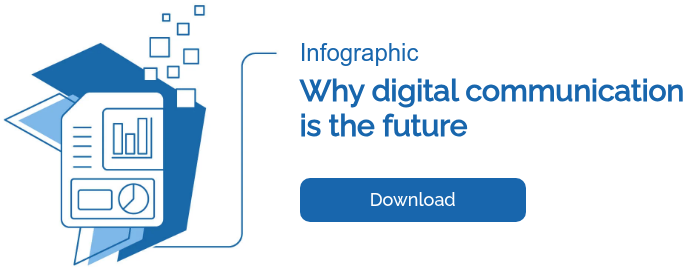The end of physical mail
In 2025, Denmark will officially stop delivering physical letters. While it may seem like a local administrative change, this decision sends a strong message across Europe: the era of paper is coming to a close. In a world where people are used to instant, digital, and personalized interactions, traditional communication no longer meets expectations. Companies that want to remain relevant must rethink how they connect with their customers.
A European trend with global implications
The decline of traditional mail is not new. Deutsche Post and other major postal operators across Europe have projected continued drops in mail volume, making paper communication increasingly costly and inefficient. Meanwhile, customers expect real-time information delivered via the digital channels they use daily—email, apps, online portals. Denmark’s decision highlights a broader structural transformation already underway.
An urgent call to act
For organizations—especially in banking, utilities, and insurance—relying on physical mail means increasing operational costs, exposing themselves to errors and delays, and losing connection with a growing digital-native audience. Embracing digital customer communication is not simply a technical upgrade; it’s a cultural and strategic shift that redefines how businesses operate and deliver value.
Why digital communication matters
Digital communication brings tangible benefits. It enables operational efficiency by automating previously manual workflows. It allows for highly targeted personalization, leading to better customer engagement. It ensures traceability of all interactions, enhancing transparency and regulatory compliance. And it contributes to environmental sustainability by reducing paper consumption.
Industry impact: banking, utilities, insurance
These sectors are particularly positioned to gain from this shift. Banks can automate the delivery of statements and notifications, ensuring timely and secure communication. Utility providers can manage billing processes more effectively and respond to customer issues proactively. Insurers benefit from faster claims processing, reduced documentation errors, and a more seamless and personalized dialogue with policyholders.
Denmark as a benchmark
Denmark is showing that this kind of transformation is not only necessary but entirely feasible. Forward-thinking companies are leveraging digital customer communication solutions to improve their customer experience and business performance. Technology in this context isn’t the goal—it’s the enabler that brings organizations closer to their customers.
What happens if you don’t evolve?
Sticking to outdated communication methods leads to loss of competitiveness, internal inefficiencies, regulatory risks, and customer dissatisfaction. In contrast, investing in digital communication today provides a solid foundation for future growth and customer loyalty.
Making the shift
Digitizing customer communication isn’t just replacing paper with PDFs. It requires a well-defined strategy, a clear roadmap, secure and scalable platforms, and internal training to support organizational change. Companies can start by analyzing current communication flows, identifying high-impact areas, choosing the right technology partners, and gradually implementing tailored digital solutions.
Conclusion
Digital customer communication is quickly becoming a pillar of modern business strategy. Denmark’s decision marks a point of no return, inviting organizations to embrace a future that’s faster, more efficient, and truly customer-centric.
Frequently Asked Questions (FAQ)
- Why did Denmark decide to stop delivering physical letters?
Because mail volumes have significantly declined and the cost of maintaining traditional services is no longer viable. It reflects a structural evolution in communication. - What are the main benefits of digital communication for a company?
Improved efficiency, better personalization, full traceability, reduced costs, and enhanced customer experience. - How can a business begin its digital communication transformation?
By mapping current processes, selecting reliable partners, and adopting integrated, scalable digital communication platforms. - Is this transformation only suitable for large enterprises?
Small and medium-sized enterprises (SMEs) can also benefit by scaling solutions to their specific needs and industry.









